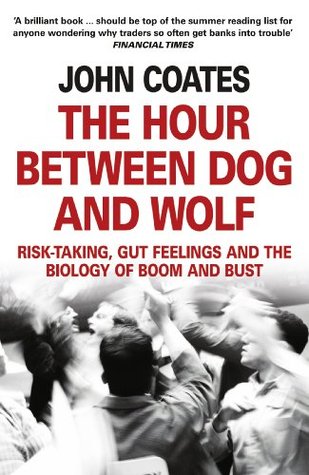More on this book
Community
Kindle Notes & Highlights
by
John Coates
Read between
September 18 - October 15, 2023
Financial risk-taking is as much a biological activity, with as many medical consequences, as facing down a grizzly bear.
One of the brain regions responsible for this early-warning system is the locus ceruleus (pronounced ser-u-leus), so called because its cells are cerulean, or deep blue. Situated in the brain stem, the most primitive part of the brain, sitting atop the spine, the locus ceruleus responds to novelty and promotes a state of arousal. When a correlation between events breaks down or a new pattern emerges, when something is just not right, this primitive part of the brain registers the change long before conscious awareness.
This dangerous pattern repeats itself in the financial markets every few years. Alan Greenspan, former chairman of the US Federal Reserve, puzzled over this periodic folly, and wrote of ‘innate human responses that result in swings between euphoria and fear that repeat themselves generation after generation’.
One group of hormones has particularly potent effects on our behaviour – steroid hormones. This group includes testosterone, oestrogen and cortisol, the main hormone of the stress response.
As testosterone levels rise, confidence and risk-taking segue into overconfidence and reckless behaviour.
If testosterone seemed a likely candidate for the molecule of irrational exuberance, another steroid seemed a likely one for the molecule of irrational pessimism – cortisol.
Thinking, one could say, is something we do only when we are no good at an activity.
‘There is little evidence beyond fallible introspection supporting the standard assumption of complete volitional control of behavior.’
Given this point, Kahneman and Klein went on to conclude that intuitions can be relied on only if two conditions are met: first, people can develop an expertise only if they work in an environment that is regular enough to produce repeating patterns; and second, they must encounter the patterns frequently and receive feedback on their performance quickly, for only in this way can they learn.
‘Remember this rule,’ advises Kahneman: ‘Intuition cannot be trusted in the absence of stable regularities in the environment.’
John Maynard Keynes, more than any other economist, understood these subterranean urges to explore, calling them ‘animal spirits’ – ‘a spontaneous urge to action rather than inaction’.
Enterprise is driven to a great extent by a pure love of risk-taking.
Central banks face a near-impossible task when confronted by irrational exuberance, for at times like these controlling the market is like herding schoolchildren on a sugar high.
Male animals experiencing a sustained rise in testosterone tend to start more fights, patrol larger areas, venture into the open more, and neglect parenting duties, all of which lead to increased predation and reduced survival.
‘The candle that burns twice as bright burns half as long.’
Control, even the illusion of control, can mitigate the stress response, while loss of control in a threatening situation provokes the most terrifying stress response.
It is often said that in war the best defence is a good offence; and perhaps in politics, business and sport, there is physiological support for this bellicose piece of advice.
The cure for fatigue, according to this account, is not a rest, it is a fresh task.
Women are not as stressed by failures in competitive situations as are men; they are more stressed by social problems, with family and relationships.
The nineteenth-century German physiologist Rudolf Virchow once remarked that politics is medicine writ large, and today we could extend his dictum to economics.


